
Da Lat: The City of Eternal Spring
Discover Da Lat, Vietnam's City of Eternal Spring, with its lush landscapes, cool climate, stunning gardens, thrilling adventures, and unique culinary delights.
Nestled in the central highlands of Vietnam, Da Lat is a charming city known for its cool climate, lush landscapes, and a blend of French colonial and modern Vietnamese architecture. Often referred to as the 'City of Eternal Spring,' Da Lat offers a refreshing escape from the tropical heat of the lowlands. The city's temperate climate makes it an ideal destination for travelers looking to explore its beautiful gardens, serene lakes, and cascading waterfalls. One of the highlights of Da Lat is the Valley of Love, a picturesque park filled with flower gardens, pine forests, and romantic sculptures. Visitors can take a leisurely boat ride on the lake or simply enjoy a peaceful walk amidst the stunning scenery. Another must-visit is the Da Lat Flower Garden, where you can marvel at a vast array of colorful blooms and exotic plants. For those seeking adventure, Da Lat has plenty to offer. The city's mountainous terrain is perfect for activities such as hiking, mountain biking, and canyoning. The Datanla Waterfall is a popular spot for thrill-seekers, offering opportunities for abseiling and cliff jumping. Additionally, the Lang Biang Mountain provides breathtaking panoramic views of the surrounding area. Da Lat is also known for its unique culinary scene. The city's cool climate allows for the cultivation of fresh produce, resulting in delicious local dishes. Don't miss the chance to try the signature Da Lat pizza, a crispy rice paper topped with a variety of flavorful ingredients, cooked over an open flame. Whether you are looking for relaxation or adventure, Da Lat has something to offer every traveler. Its natural beauty, vibrant culture, and friendly locals make it a destination worth exploring.
Local tips in Da Lat
- Bring a light jacket as temperatures can drop in the evening.
- Rent a motorbike for flexible and convenient travel around the city.
- Visit the local markets early in the morning for the best selection of fresh produce and local delicacies.
- Try to visit popular attractions on weekdays to avoid the weekend crowds.
- Stay in a French colonial villa for a unique and charming accommodation experience.
Da Lat: The City of Eternal Spring
Nestled in the central highlands of Vietnam, Da Lat is a charming city known for its cool climate, lush landscapes, and a blend of French colonial and modern Vietnamese architecture. Often referred to as the 'City of Eternal Spring,' Da Lat offers a refreshing escape from the tropical heat of the lowlands. The city's temperate climate makes it an ideal destination for travelers looking to explore its beautiful gardens, serene lakes, and cascading waterfalls. One of the highlights of Da Lat is the Valley of Love, a picturesque park filled with flower gardens, pine forests, and romantic sculptures. Visitors can take a leisurely boat ride on the lake or simply enjoy a peaceful walk amidst the stunning scenery. Another must-visit is the Da Lat Flower Garden, where you can marvel at a vast array of colorful blooms and exotic plants. For those seeking adventure, Da Lat has plenty to offer. The city's mountainous terrain is perfect for activities such as hiking, mountain biking, and canyoning. The Datanla Waterfall is a popular spot for thrill-seekers, offering opportunities for abseiling and cliff jumping. Additionally, the Lang Biang Mountain provides breathtaking panoramic views of the surrounding area. Da Lat is also known for its unique culinary scene. The city's cool climate allows for the cultivation of fresh produce, resulting in delicious local dishes. Don't miss the chance to try the signature Da Lat pizza, a crispy rice paper topped with a variety of flavorful ingredients, cooked over an open flame. Whether you are looking for relaxation or adventure, Da Lat has something to offer every traveler. Its natural beauty, vibrant culture, and friendly locals make it a destination worth exploring.
When is the best time to go to Da Lat?
Iconic landmarks you can’t miss
Datanla Waterfall
Experience the breathtaking beauty of Datanla Waterfall, a natural gem in Da Lat, Vietnam, perfect for adventure and tranquility seekers alike.
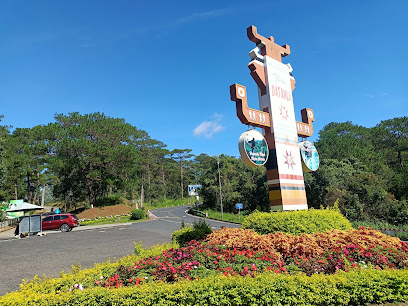
Clay Tunnel
Explore the enchanting Clay Tunnel in Dalat, Vietnam, where artistry meets nature in a stunning underground adventure.
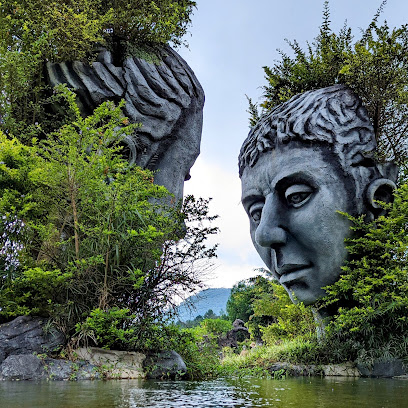
Valley Of Love
Experience the breathtaking beauty of the Valley of Love in Da Lat, Vietnam, where romance meets nature in a captivating setting.
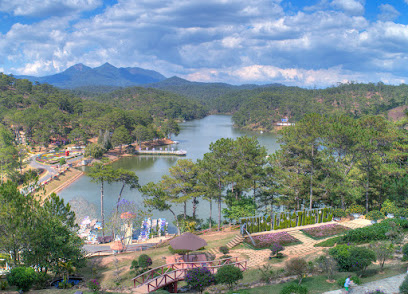
Lam Vien Square
Discover the vibrant Lam Vien Square in Da Lat, Vietnam, where culture, beauty, and nature blend seamlessly to create an unforgettable experience.
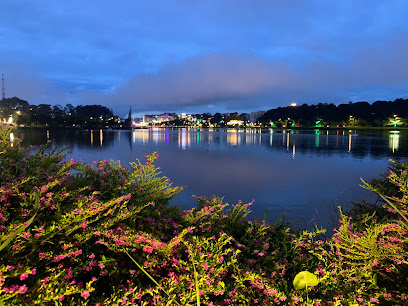
Tuyen Lam Lake
Discover the serene beauty of Tuyen Lam Lake in Da Lat, Vietnam, where nature and tranquility come together in a breathtaking escape.
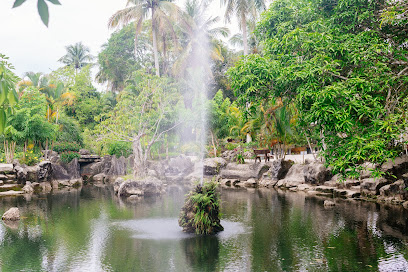
Dinh III Bảo Đại
Discover the royal legacy of Vietnam at Dinh III Bảo Đại, a stunning historical palace nestled in the lush landscapes of Đà Lạt.
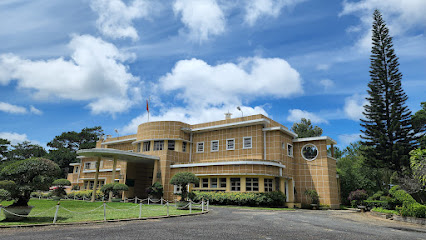
Domaine de Marie
Experience the architectural beauty and tranquil gardens of Domaine de Marie, an iconic Catholic church in Da Lat, Vietnam, perfect for spiritual reflection and cultural exploration.

Bao Dai Palace 1
Discover the enchanting Bao Dai Palace 1 in Da Lat, Vietnam—an exquisite blend of history, culture, and stunning architecture amidst lush landscapes.
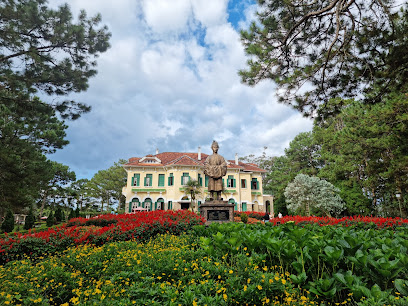
Mongo Land Dalat
Explore the vibrant landscapes and unique photo opportunities at Mongo Land Dalat, a must-visit tourist attraction in Vietnam's picturesque Dalat.
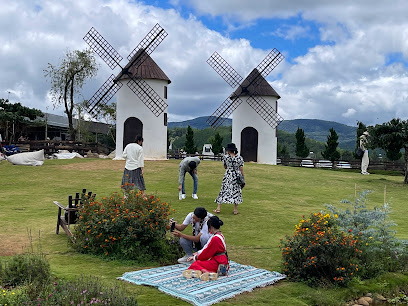
Da Lat Cable Car Station
Experience breathtaking views and the serene beauty of Da Lat from above with a ride on the Da Lat Cable Car.
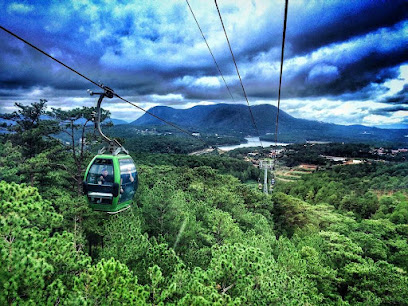
Thiền viện Vạn Hạnh
Discover the spiritual beauty of Thiền Viện Vạn Hạnh, a serene Buddhist temple in Đà Lạt, perfect for tranquility and cultural exploration.
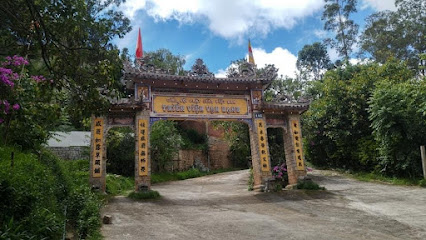
Maple Leaf tourist area
Experience the breathtaking beauty and vibrant culture of the Maple Leaf Tourist Area in Da Lat, Vietnam, where nature and adventure await.
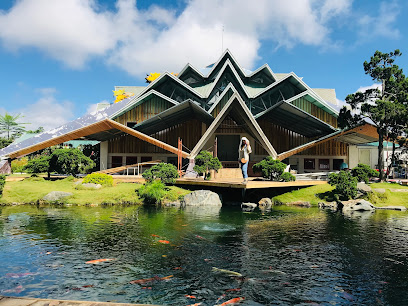
Mong Mo Hill Tourist Area
Explore Mong Mo Hill Tourist Area for breathtaking views, lush landscapes, and a taste of Vietnamese culture in Da Lat.
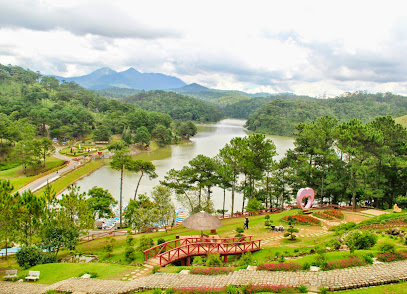
Vườn hoa thành phố Đà Lạt
Experience the stunning beauty of Vườn hoa thành phố Đà Lạt, Vietnam’s premier flower garden, where vibrant blooms and tranquility await.
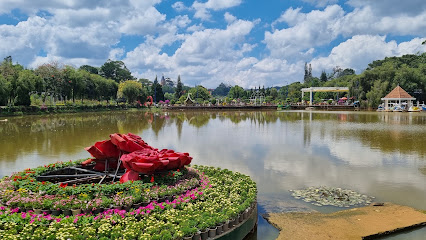
Truc Lam Buddhist Monastery
Discover peace and spirituality at Truc Lam Buddhist Monastery in Da Lat, Vietnam, amidst breathtaking natural beauty and serene architecture.

Unmissable attractions to see
Clay Tunnel
Explore the magical Clay Tunnel in Dalat, where creativity and nature intertwine in a stunning display of artistry.

Valley Of Love
Discover the romantic charm and breathtaking beauty of the Valley of Love, a picturesque attraction in Da Lat, Vietnam, perfect for all visitors.
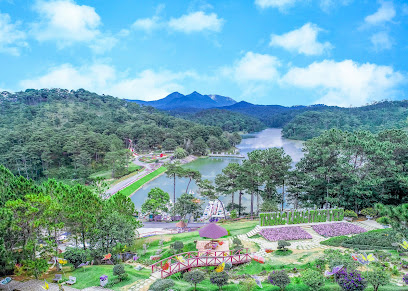
Tuyen Lam Lake
Explore the natural beauty and tranquility of Tuyen Lam Lake, a stunning tourist attraction in Da Lat, Vietnam, surrounded by lush forests and adventure.
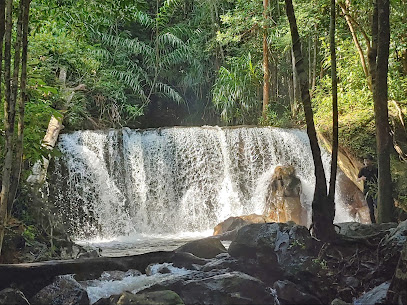
Hoa Son Dien Trang Ecotourism Destination
Explore the stunning landscapes and vibrant flora at Hoa Son Dien Trang, a unique ecotourism destination in the heart of Lam Dong, Vietnam.
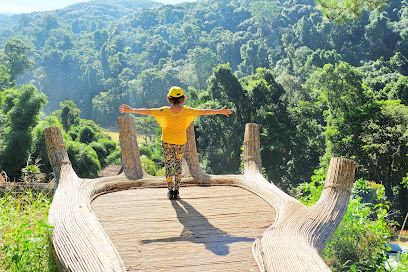
Thiền viện Vạn Hạnh
Experience the tranquility of Thiền Viện Vạn Hạnh, a stunning Buddhist temple in Da Lat, Vietnam, surrounded by nature's beauty and spiritual serenity.

Maple Leaf tourist area
Explore the enchanting Maple Leaf Tourist Area in Da Lat, Vietnam - a serene escape filled with stunning landscapes and vibrant gardens.
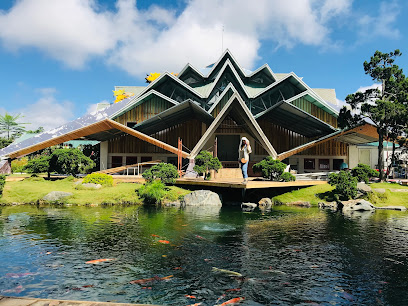
Mong Mo Hill Tourist Area
Experience the breathtaking beauty of Mong Mo Hill Tourist Area, a tranquil escape filled with lush landscapes and rich cultural experiences in Da Lat, Vietnam.
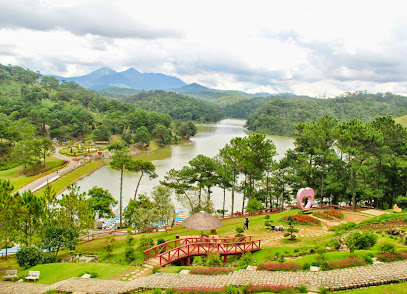
Cam Ly Waterfall
Experience the breathtaking beauty of Cam Ly Waterfall in Da Lat, a perfect blend of nature, adventure, and tranquility.
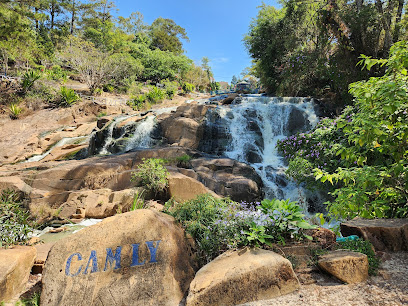
Linh Son Pagoda
Explore Linh Son Pagoda in Da Lat, Vietnam – a serene Buddhist temple surrounded by lush landscapes and rich cultural heritage.
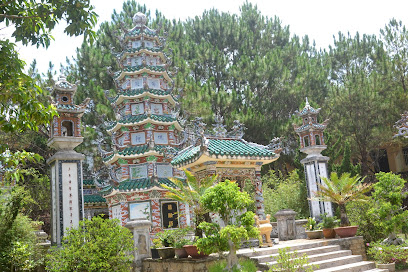
Nhật Strawberry garden
Explore Nhât Strawberry Garden in Đà Lạt for unforgettable fruit-picking experiences amidst stunning natural beauty.

Hill Thien Phuc Duc
Explore the enchanting Hill Thien Phuc Duc in Da Lat, Vietnam, a serene tourist attraction with breathtaking views and lush landscapes for a perfect getaway.
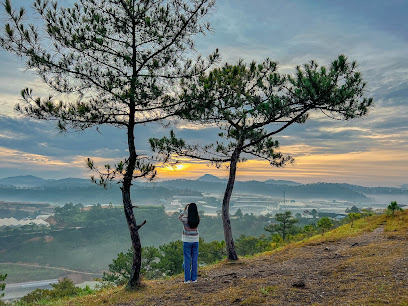
KDL Sinh Thái Cao Nguyên Hoa Đà Lạt
Explore the vibrant gardens and breathtaking views at KDL Sinh Thái Cao Nguyên Hoa Đà Lạt, a floral paradise in Vietnam's scenic city.
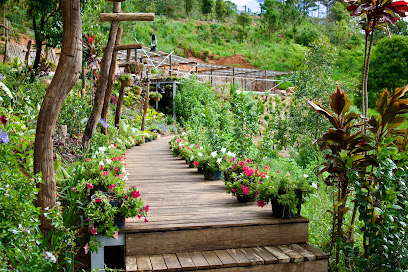
Light Park
Experience the tranquility and natural beauty of Light Park in Da Lat, Vietnam, an ideal retreat for nature lovers and photographers alike.
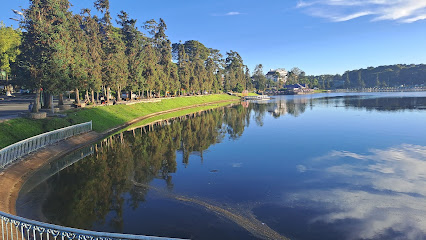
Lavender Dalat Tourist Area
Explore the enchanting Lavender Dalat Tourist Area in Vietnam, a vibrant floral paradise perfect for nature lovers and photography enthusiasts.
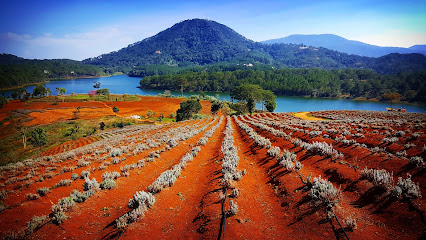
Da Tien Tourist Area
Explore the natural beauty and tranquility of Da Tien Tourist Area in Da Lat, Vietnam, a perfect destination for relaxation and adventure.
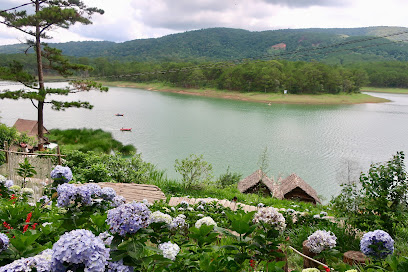
Essential places to dine
Nhà Hàng Thủy Tạ
Experience exquisite Vietnamese cuisine at Nhà Hàng Thủy Tạ while enjoying breathtaking views in beautiful Đà Lạt.
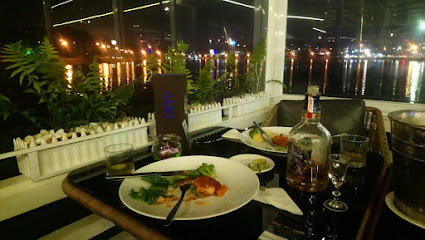
Chu BBQ restaurant
Discover the vibrant flavors of Vietnamese barbecue at Chu BBQ Restaurant in Da Lat - where every meal is a celebration!
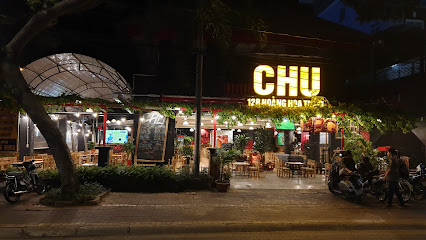
Primavera Italian Restaurant
Savor authentic Italian cuisine at Primavera Italian Restaurant in Da Lat - where every bite feels like a taste of home.
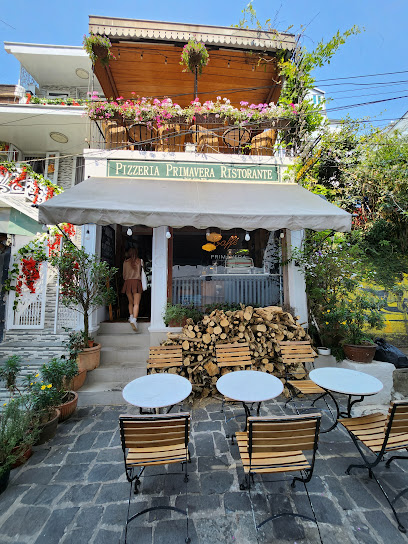
Blue Parrot Mexican Grill
Experience authentic Mexican cuisine at Blue Parrot Mexican Grill in Da Lat, where vibrant flavors meet warm hospitality.
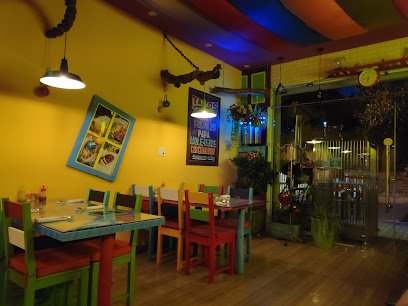
Le Chalet Dalat
Experience culinary excellence at Le Chalet Dalat - where local flavors meet international cuisine in a charming setting.
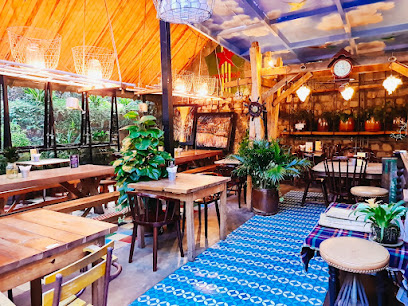
Goc ha thanh
Discover authentic Vietnamese flavors at Goc ha thanh in Da Lat – where each dish is a celebration of local culture and culinary artistry.
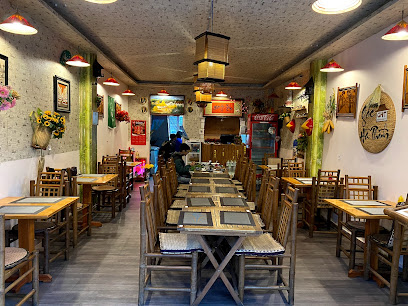
Moto Laurie Cafe & Bistro
Discover culinary delights at Moto Laurie Cafe & Bistro in Dalat - where delicious food meets vibrant atmosphere!
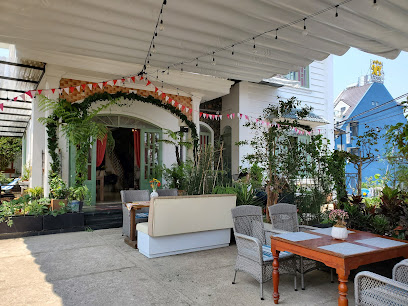
Trang's Cookery Restaurant
Savor the finest blend of Western and Vietnamese flavors at Trang's Cookery Restaurant in Da Lat.
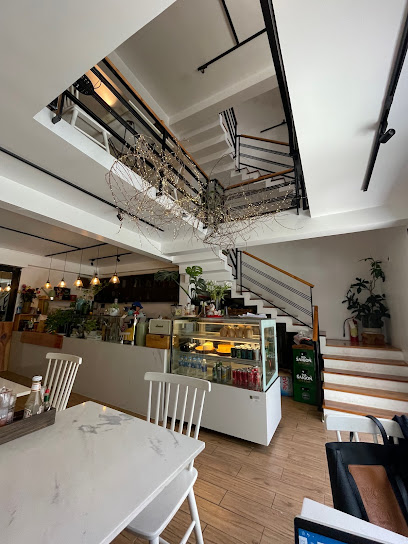
Émai Italian Restaurant & Gardens
Discover the perfect blend of authentic Italian cuisine and serene garden ambiance at Émai Italian Restaurant & Gardens in Da Lat.
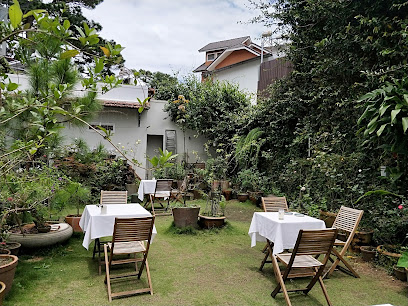
Biang Dalat Garden Restaurant
Experience exquisite European cuisine blended with local Vietnamese flavors at Biang Dalat Garden Restaurant in Da Lat.

Artist Alley restaurant
Experience authentic Vietnamese cuisine in an artistic ambiance at Artist Alley Restaurant in beautiful Da Lat.
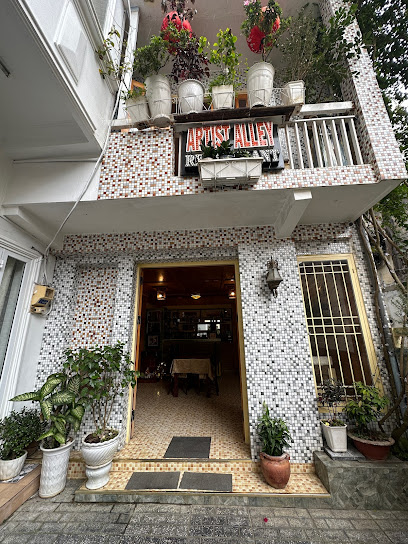
IndiaGate Indian Restaurant
Savor the essence of India with authentic dishes at IndiaGate Indian Restaurant in beautiful Đà Lạt.
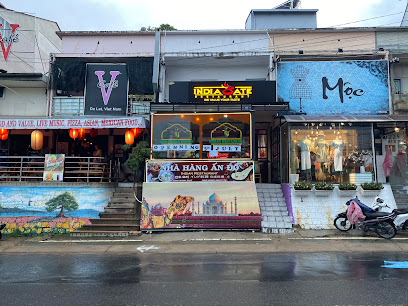
Chef's Dalat
Discover exquisite modern European cuisine at Chef's Dalat, where every dish tells a story amidst breathtaking views in Vietnam's scenic highlands.

BOTEA
Experience the exquisite fusion of French elegance and Vietnamese authenticity at Botea in scenic Dalat.
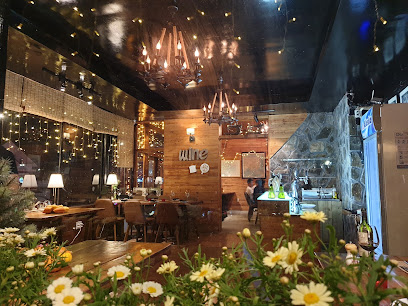
Nhà hàng Túi Mơ To Garden Restaurant
Experience authentic Vietnamese barbecue and hot pot at Túi Mơ To Garden Restaurant in Đà Lạt's stunning natural surroundings.
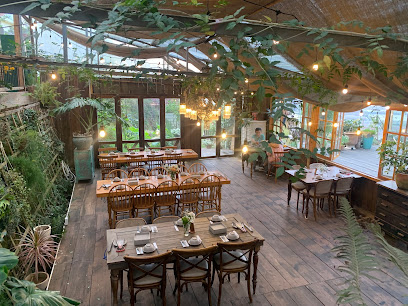
Markets, malls and hidden boutiques
Da Lat Night Market
Discover the enchanting Da Lat Night Market, a bustling hub of food, culture, and unique shopping experiences in the heart of Da Lat, Vietnam.
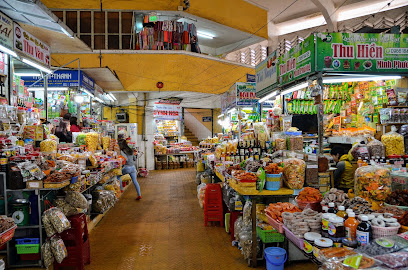
GO! Da Lat
Experience the vibrant shopping culture at GO! Da Lat, a hypermarket offering local delicacies, unique souvenirs, and a taste of Vietnamese lifestyle.
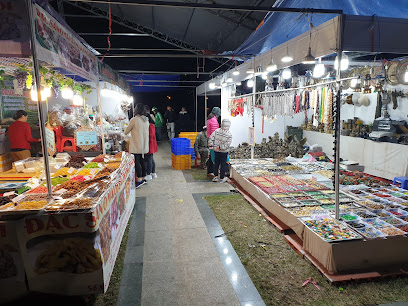
Still cafe
Experience the calming vibe and exceptional coffee at Still Cafe in Da Lat, Vietnam's serene retreat for coffee enthusiasts.
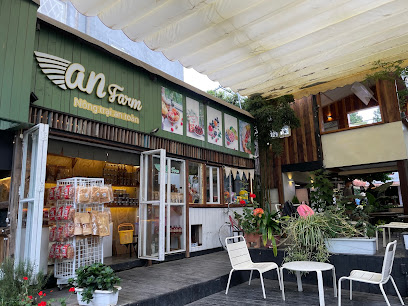
Đà Lạt Mountain View
Discover the breathtaking views and rich flavors of Vietnamese coffee at Đà Lạt Mountain View, a must-visit café in Đà Lạt.
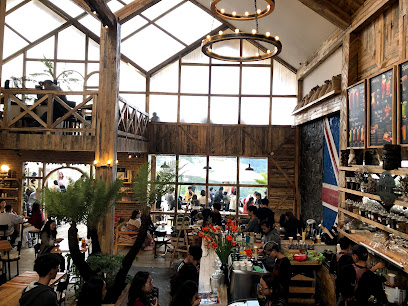
Tiệm cafe phía tây mặt trời
Discover the serene ambiance of Tiệm Cafe Phía Tây Mặt Trời in Da Lat, where exquisite coffee meets breathtaking views in a cozy setting.
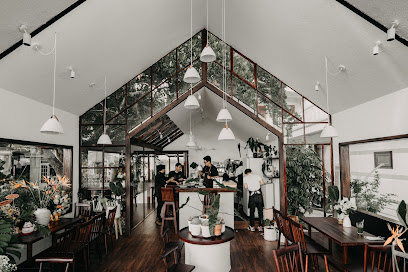
LATICA Coffee - Dalat Railway Station
Discover LATICA Coffee, a delightful coffee shop near Dalat Railway Station offering exquisite drinks and stunning views of Dalat's beautiful landscapes.
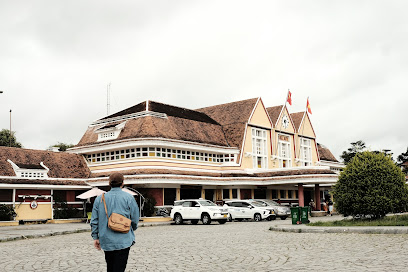
Shop hạ
Explore the vibrant Shop Hạ in Da Lat for unique local crafts, delicious street food, and a lively shopping experience in Vietnam's mountainous heart.
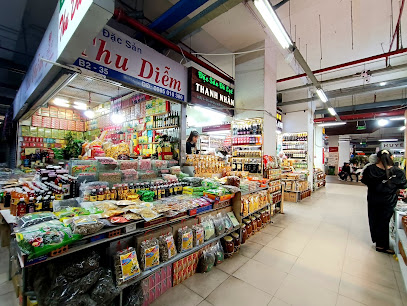
Shop đồ si Pansi.2hand | secondhand, vintage & retro clothing
Explore Pansi.2hand in Da Lat for unique vintage and retro clothing, where every piece tells a story and sustainability meets style.
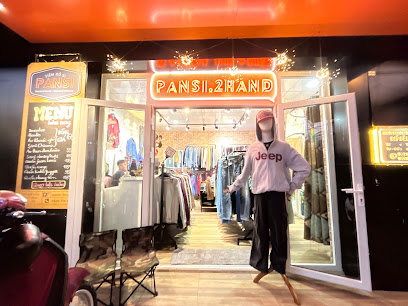
Adam Store Đà Lạt I - Veston, Suit, Shirt, Items for Men, Thời Trang Nam
Explore Đà Lạt's premier men's clothing store, Adam Store, for tailored suits and stylish fashion that sets you apart.

Routine
Discover the vibrant world of fashion at Routine, a charming costume store in Da Lat, Vietnam, offering unique clothing for men and women.
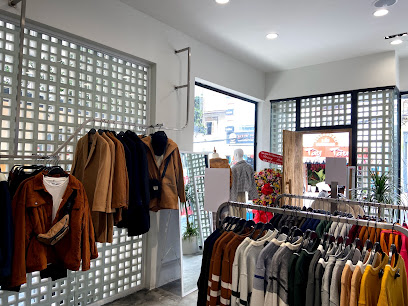
Ở Đây Có Một Con Mèo
Uncover unique treasures at 'Ở Đây Có Một Con Mèo' – your go-to souvenir store in Da Lat for authentic Vietnamese crafts and gifts.
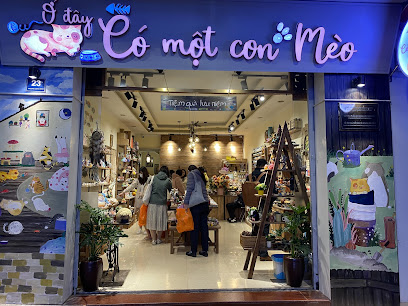
Miue.healing Shop
Explore the beauty of handcrafted jewelry and unique gifts at Miue Healing Shop in Đà Lạt, a true treasure of Vietnamese culture.
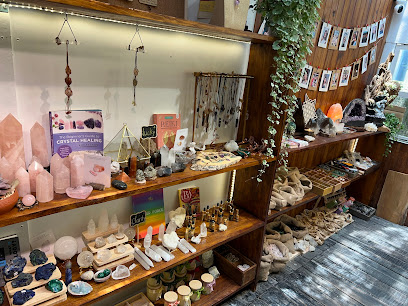
Mận
Experience the essence of Da Lat at Mận, where quality coffee meets a cozy atmosphere in the heart of Vietnam's charming highlands.

FM Style Đà Lạt
Explore the vibrant fashion scene at FM Style Đà Lạt, where style meets quality in a charming shopping atmosphere.
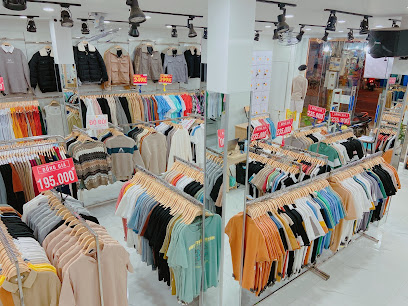
Moss Đà Lạt - Phụ kiện Quà tặng
Explore Moss Đà Lạt for unique gifts, cosmetics, and accessories that embody the charm of Vietnam's beloved highland city.
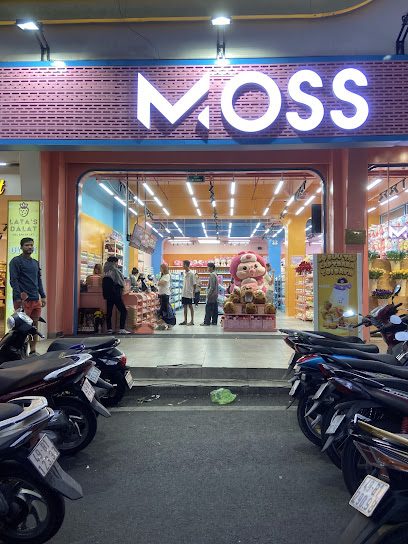
Essential bars & hidden hideouts
Maze Bar
Explore the magical Maze Bar in Da Lat, Vietnam, a whimsical cocktail haven perfect for unforgettable nights with friends.
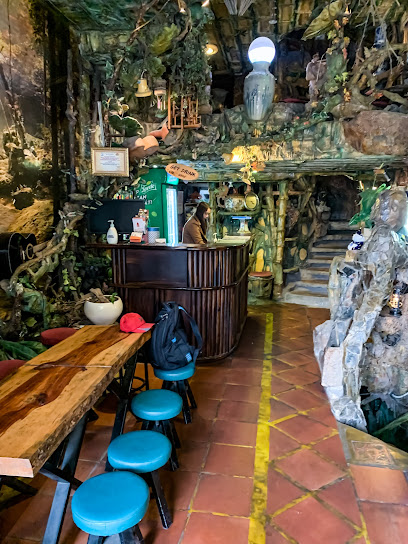
The Balcony Speakeasy Bar DaLat
Experience the vibrant atmosphere and exquisite cocktails at The Balcony Speakeasy Bar, DaLat's premier cocktail destination.
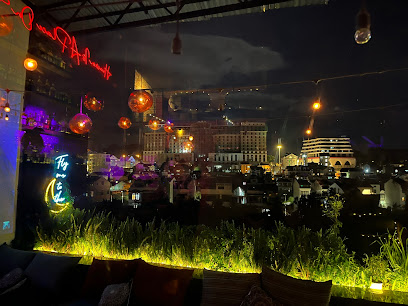
On The Rocks Cocktail Bar
Discover the vibrant nightlife of Da Lat at On The Rocks Cocktail Bar, offering exquisite cocktails and an inviting atmosphere.
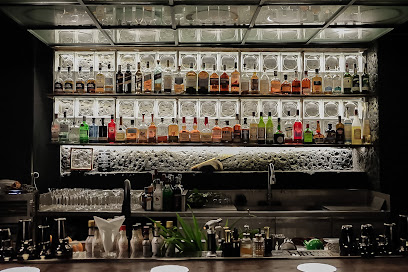
B21Bar
Experience the vibrant ambiance and refreshing cocktails at B21Bar, Da Lat's finest bar & grill, perfect for relaxing after a day of exploration.
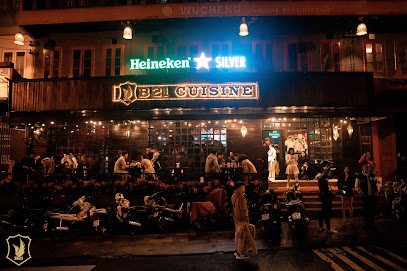
The Classic Pub - NGUYET VONG LAU
Experience the vibrant atmosphere and eclectic cocktails at The Classic Pub in Da Lat, a must-visit for tourists seeking a lively night out.
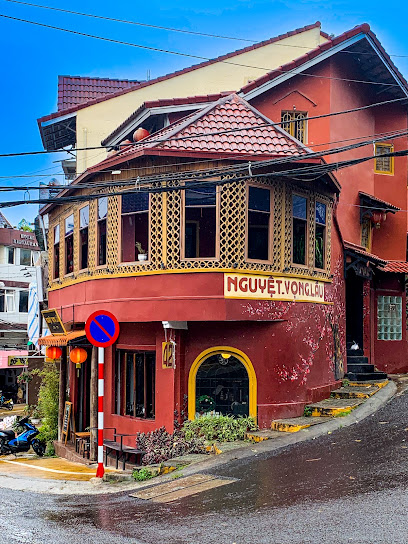
100 Roof Bar
Experience the vibrant nightlife of Da Lat at 100 Roof Bar, featuring stunning views, unique architecture, and a diverse drink menu.
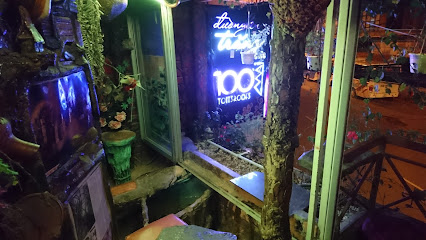
Woody Classic Bar
Experience the charm of Woody Classic Bar in Da Lat, where cozy ambiance meets a diverse drink selection for every traveler.
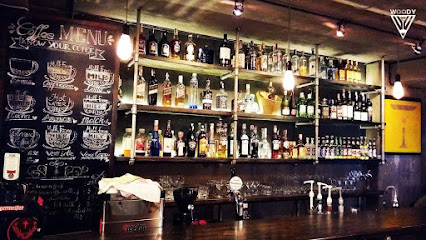
420 Sunset cocktail bar DaLat
Discover 420 Sunset Cocktail Bar in DaLat – a vibrant cocktail haven with stunning sunset views and an array of inventive drinks.
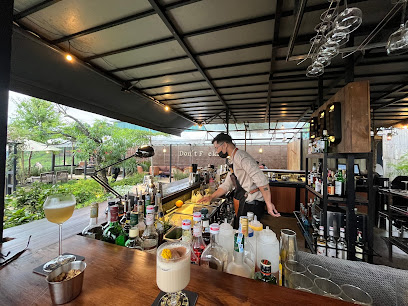
Le Retour
Experience the charm of Da Lat at Le Retour, a delightful wine bar offering a cozy atmosphere and an exquisite selection of wines from around the world.
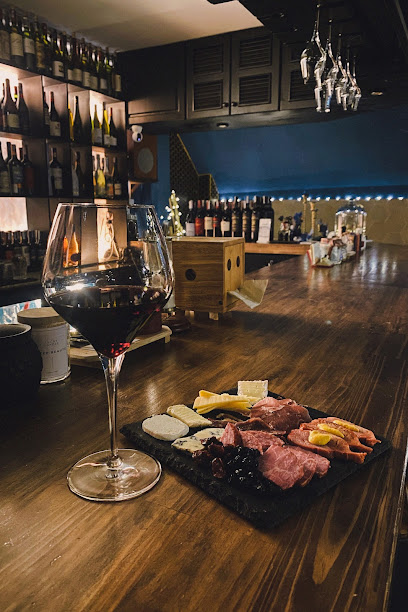
The Fog On Site
Discover the unique charm of The Fog On Site in Dalat, Vietnam, where stunning views and creative cocktails create unforgettable nights.
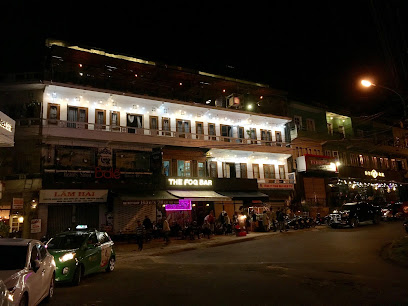
Fox’s Den
Discover the enchanting charm of Fox’s Den, Da Lat's premier cocktail bar offering exquisite drinks and a cozy atmosphere perfect for unwinding.
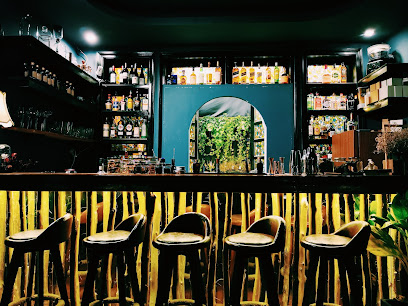
V Sky Acoustic Bar
Discover the vibrant atmosphere of V Sky Acoustic Bar in Da Lat, where stunning views and acoustic tunes create an unforgettable nightlife experience.

Ci Cocktail Bar
Discover the allure of Ci Cocktail Bar in Đà Lạt, where innovative cocktails meet a charming speakeasy atmosphere for an unforgettable nightlife experience.
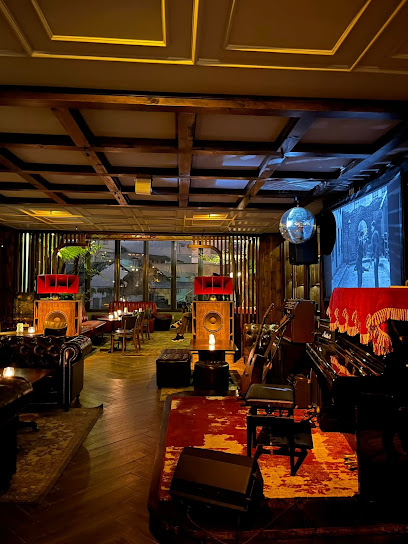
Rainy Rhythm - Hidden Cocktail Bar
Discover Rainy Rhythm, a hidden cocktail bar in Dalat, Vietnam, where unique drinks and cozy vibes create an unforgettable evening experience.
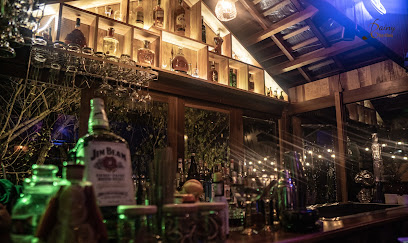
Mizu Bar Dalat
Discover Mizu Bar Dalat, where unique flavors and a vibrant atmosphere create unforgettable nights in the heart of Dalat.
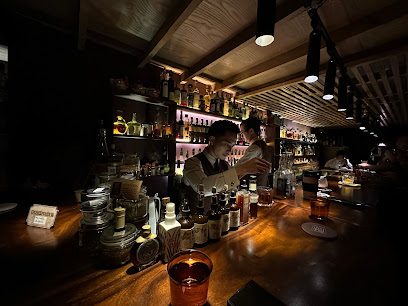
Local Phrases about Da Lat
-
- HelloXin chào
[sin chow] - GoodbyeTạm biệt
[tam byet] - YesCó
[kaw] - NoKhông
[kohng] - Please/You're welcomeXin vui lòng
[sin vui long] - Thank youCảm ơn
[kahm uhn] - Excuse me/SorryXin lỗi
[sin lawy] - How are you?Bạn khỏe không?
[bahn kwe khohng] - Fine. And you?Khỏe. Còn bạn?
[khwe. kawn bahn] - Do you speak English?Bạn có nói tiếng Anh không?
[bahn kaw noy tyeng ahn kohng] - I don't understandTôi không hiểu
[toy kohng hye-u]
- HelloXin chào
-
- I'd like to see the menu, pleaseTôi muốn xem menu, vui lòng
[toy muown sem menoo, vui long] - I don't eat meatTôi không ăn thịt
[toy kohng an tit] - Cheers!Chúc sức khỏe!
[chook sook khwe] - I would like to pay, pleaseTôi muốn thanh toán, vui lòng
[toy muown thanh toan, vui long]
- I'd like to see the menu, pleaseTôi muốn xem menu, vui lòng
-
- Help!Giúp!
[yup] - Go away!Đi đi!
[dee dee] - Call the Police!Gọi cảnh sát!
[goy kahng saat] - Call a doctor!Gọi bác sĩ!
[goy bahk see] - I'm lostTôi bị lạc
[toy bee lack] - I'm illTôi ốm
[toy ohm]
- Help!Giúp!
-
- I'd like to buy...Tôi muốn mua...
[toy muown mwa] - I'm just lookingTôi chỉ xem
[toy chi sem] - How much is it?Bao nhiêu tiền?
[baow nyew tea-en] - That's too expensiveĐắt quá
[dat qua] - Can you lower the price?Có thể giảm giá được không?
[koh tay yem zah duowk kohng]
- I'd like to buy...Tôi muốn mua...
-
- What time is it?Bây giờ mấy giờ rồi?
[bay zow may zow roy] - It's one o'clockMột giờ
[mowt zow] - Half past (10)Rưỡi (10)
[rwee (10)] - MorningBuổi sáng
[boo-ee saang] - AfternoonBuổi chiều
[boo-ee chee-yoo] - EveningBuổi tối
[boo-ee toy] - YesterdayHôm qua
[hohm kwah] - TodayHôm nay
[hohm nigh] - TomorrowNgày mai
[ny-igh my] - 1Một
[mowt] - 2Hai
[high] - 3Ba
[bah] - 4Bốn
[bohn] - 5Năm
[nahm] - 6Sáu
[sow] - 7Bảy
[bahy] - 8Tám
[tahm] - 9Chín
[cheen] - 10Mười
[moo-ee]
- What time is it?Bây giờ mấy giờ rồi?
-
- Where's a/the...?Ở đâu là...?
[oh dao la] - What's the address?Địa chỉ là gì?
[dia chi la zee] - Can you show me (on the map)?Bạn có thể chỉ cho tôi không?
[bahn koh tay chee chaw toy kohng] - When's the next (bus)?Khi nào là chuyến xe buýt tiếp theo?
[khee now la chwee-un say buwt tyep the-oh] - A ticket (to ....)Một vé (đến ....)
[mowt vee (den)]
- Where's a/the...?Ở đâu là...?
History of Da Lat
-
Da Lat was founded in the late 19th century when French colonialists sought a cool, temperate retreat from the heat and humidity of the lowlands. The city's establishment is attributed to Dr. Alexandre Yersin, a Swiss-French bacteriologist, who surveyed the area in 1893 and recommended it as a hill station.
-
The French colonialists left a lasting mark on Da Lat's architecture. The city is adorned with charming villas, European-style churches, and the iconic Da Lat Railway Station, built in the 1930s. The combination of French colonial architecture and natural beauty makes Da Lat unique compared to other Vietnamese cities.
-
During the Vietnam War, Da Lat served as a rest and recreation center for American and South Vietnamese troops. The city’s relative tranquility and strategic location made it a temporary safe haven amidst the chaos of war. However, it also witnessed battles and the presence of military academies.
-
Da Lat's temperate climate is ideal for agriculture, and the city is known as the 'City of Eternal Spring.' It has become a hub for the production of flowers, vegetables, and coffee. The agricultural sector plays a significant role in the local economy, and the annual Flower Festival celebrates this heritage.
-
Established in 1957, Da Lat University has become a prominent educational institution in Vietnam. Initially founded to train teachers, it has expanded to offer various academic programs. The university contributes to the city's intellectual and cultural development.
-
Da Lat is home to a diverse population, including several ethnic minority groups such as the K’ho and the Ma. These communities contribute to the city's rich cultural tapestry with their unique traditions, crafts, and festivals. The local markets and cultural events offer insights into their way of life.
-
Today, Da Lat is a popular tourist destination known for its natural beauty, including lakes, waterfalls, and pine forests. The city has evolved while preserving its historical and cultural heritage. Attractions like the Crazy House, Xuan Huong Lake, and the Valley of Love draw visitors from around the world.
Da Lat Essentials
-
Da Lat is located in the Central Highlands of Vietnam. The nearest airport is Lien Khuong Airport (DLI), approximately 30 kilometers south of Da Lat. From the airport, you can take a taxi or an airport shuttle bus to the city center. Alternatively, you can travel by bus from major cities like Ho Chi Minh City or Nha Trang. The bus journey from Ho Chi Minh City takes around 6-8 hours, while from Nha Trang, it takes about 3-4 hours. For a scenic and leisurely trip, you can take the train to Phan Rang-Thap Cham and then a bus or taxi to Da Lat.
-
Da Lat is a relatively small city, and many attractions are within walking distance. For longer trips, local taxis are readily available, and ride-hailing apps like Grab are also popular. Public buses operate within the city and connect to nearby areas. Motorbike rentals are a common and convenient way to explore the city and its surroundings. Bicycle rentals are also available and provide a great way to enjoy the scenic landscapes at a leisurely pace.
-
The official currency in Vietnam is the Vietnamese Dong (VND). Credit cards are accepted in many hotels, restaurants, and larger shops, but it is advisable to carry cash, especially in smaller establishments and markets. ATMs are widely available throughout Da Lat, and it's a good idea to withdraw sufficient cash for your daily expenses. Currency exchange services are available at banks and currency exchange offices.
-
Da Lat is generally a safe destination for tourists. However, it is advisable to take standard precautions. Avoid walking alone at night in unfamiliar areas and keep an eye on your belongings in crowded places. While Da Lat does not have specific high-crime areas targeting tourists, it is always best to stay vigilant and aware of your surroundings. Be cautious of petty theft, such as pickpocketing, especially in busy markets and tourist spots.
-
In case of an emergency, dial 113 for police assistance, 114 for fire emergencies, and 115 for medical emergencies. Da Lat has several hospitals and clinics that provide medical services. It is recommended to have travel insurance that covers medical emergencies. For minor health issues, there are numerous pharmacies in the city where you can purchase over-the-counter medications.
-
Fashion: Do dress modestly, especially when visiting religious sites. Avoid wearing revealing clothing. Religion: Do respect local customs and traditions. Always remove your shoes when entering temples and pagodas. Public Transport: Do be respectful and give up your seat to elderly passengers. Don’t eat or drink on public transport. Greetings: Do greet people with a smile and a slight bow of the head. A handshake is also common among men. Eating & Drinking: Do try local delicacies and accept food offerings graciously. Don’t refuse hospitality, as it is considered impolite.
-
To experience Da Lat like a local, visit the local markets such as Da Lat Market and the Night Market where you can buy fresh produce, flowers, and traditional Vietnamese goods. Engage with locals, as they are often friendly and willing to share stories about the city's history and culture. Don’t miss visiting the famous landmarks such as the Crazy House, Bao Dai Summer Palace, and the Truc Lam Zen Monastery. For a unique experience, take a stroll around Xuan Huong Lake or ride the Da Lat Railway for scenic views of the countryside.
Trending Landmarks in Da Lat
Nearby Cities to Da Lat
-
Things To Do in Nha Trang
-
Things To Do in Buon Ma Thuot
-
Things To Do in Mui Ne
-
Things To Do in Phan Thiet
-
Things To Do in Quy Nhon
-
Things To Do in Vung Tau
-
Things To Do in Ho Chi Minh City
-
Things To Do in Kratie
-
Things To Do in Can Tho
-
Things To Do in Phnom Penh
-
Things To Do in Tam Ky
-
Things To Do in Champasak
-
Things To Do in Hoi An
-
Things To Do in Pakse
-
Things To Do in Da Nang










